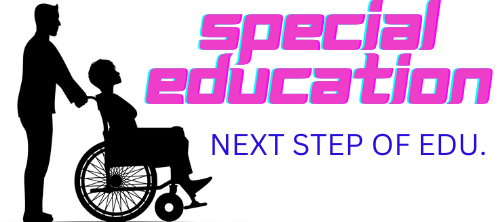DWARFISM -
🔴 Dwarfism is a medical condition characterized by short stature that results from a genetic or medical condition. Individuals with dwarfism have an adult height of less than 4 feet 10 inches (147 cm) due to the slower growth rate of their bones and cartilage. Dwarfism affects both males and females equally and occurs in all races and ethnicities.
🔴 There are more than 300 types of dwarfism, but the most common form is achondroplasia, which affects about 1 in 25,000 people. Achondroplasia is caused by a mutation in the FGFR3 gene, which affects bone growth. Other types of dwarfism include hypochondroplasia, spondyloepiphyseal dysplasia, diastrophic dysplasia, and Turner syndrome.
🔴 Dwarfism can be caused by a genetic mutation or a spontaneous genetic change, which means it is not inherited from the parents. Some types of dwarfism are inherited, and parents who carry the gene have a 25% chance of having a child with dwarfism.
🔴 The diagnosis of dwarfism is usually made by measuring the height and weight of an individual and comparing it to growth charts. X-rays and genetic testing may also be done to confirm the diagnosis and determine the underlying cause of the condition.
🔴 There is no cure for dwarfism, but treatment is available to manage the symptoms and improve the quality of life for individuals with this condition. Treatment may include growth hormone therapy, surgery to correct skeletal abnormalities, and physical therapy to improve mobility and flexibility.
🔴 People with dwarfism can live long and healthy lives with the proper medical care and support. It is important to recognize and respect the dignity of individuals with dwarfism and to promote awareness and inclusion for this community.
Dwarfism Symptoms -
Dwarfism is a condition that results in a shorter-than-average stature in humans. The condition is caused by genetic mutations or other medical conditions that affect the growth and development of bones, muscles, and other body tissues. Here are some of the common symptoms of dwarfism:
1. Short stature: One of the most obvious symptoms of dwarfism is a height that is significantly shorter than average. Adult height for people with dwarfism may range from 2 to 4 feet tall.
2. Proportional or disproportionate body: People with dwarfism may have a proportional or disproportionate body size. In proportional dwarfism, all parts of the body are reduced in size equally. In disproportionate dwarfism, some parts of the body are larger or smaller than others.
3. Short limbs: One of the most common features of dwarfism is shortening of the arms and legs. This can affect the length of bones in the arms and legs, as well as the size of the hands and feet.
4. Enlarged head: In some cases, people with dwarfism may have an enlarged head in relation to their body size. This can result in a higher risk of hydrocephalus, a condition where there is an excess of cerebrospinal fluid in the brain.
5. Curved spine: People with dwarfism may be at risk of developing scoliosis, a condition where the spine curves to the side. This can result in back pain and difficulty breathing.
6. Joint problems: Some people with dwarfism may experience joint problems, such as arthritis or dislocation of the hip joint.
7. Dental problems: People with dwarfism may be at higher risk of dental problems, such as misalignment of teeth or overcrowding.
8. Hearing and vision problems: Some types of dwarfism can lead to hearing and vision problems, such as nearsightedness or cataracts.
9. Respiratory problems: People with dwarfism may have a smaller chest size, which can make it difficult to breathe. This can result in a higher risk of respiratory infections, such as pneumonia.
10. Delayed puberty: People with dwarfism may experience delayed puberty, which can result in delayed or incomplete sexual development.
It's important to note that the symptoms of dwarfism can vary widely depending on the underlying cause. Some people with dwarfism may have only mild symptoms, while others may experience severe complications. If you or someone you know is concerned about the possibility of dwarfism, it's important to speak with a medical professional for a proper diagnosis and treatment plan.
Dwarfism causes -
🔴 Dwarfism is a condition characterized by short stature that is caused by genetic or medical factors. Individuals with dwarfism have an adult height of less than 4 feet 10 inches (147 cm) due to various medical or genetic conditions that affect the growth of their bones and body.
🔴 There are over 300 different types of dwarfism, each with its own unique set of characteristics and causes. The most common type of dwarfism is called achondroplasia, which accounts for about 70% of all cases. Achondroplasia is caused by a genetic mutation that affects the way bones grow, leading to shorter limbs and a larger head and torso.
🔴 Other causes of dwarfism include genetic mutations that affect bone growth and development, such as hypochondroplasia, pseudoachondroplasia, and diastrophic dysplasia. Some medical conditions, such as growth hormone deficiency, can also cause dwarfism.
🔴 Dwarfism can affect people of all ethnic and racial backgrounds, and it occurs in both males and females. It is estimated that approximately one in every 25,000 people is born with dwarfism.
🔴 The symptoms of dwarfism vary depending on the specific type of condition. In addition to short stature, individuals with dwarfism may have a larger head in proportion to their body, short fingers and toes, and a curvature of the spine called scoliosis. Some types of dwarfism can also cause joint problems, such as arthritis, and breathing problems due to the shape of the rib cage.
🔴 There is no cure for dwarfism, but many of the medical complications associated with the condition can be treated with medication, surgery, or physical therapy. Children with dwarfism may benefit from growth hormone therapy to increase their height, while adults may benefit from joint replacement surgery or other treatments to alleviate joint pain.
🔴 It is important to note that individuals with dwarfism can live full and active lives, and many go on to achieve great success in their personal and professional lives. They may face certain challenges related to accessibility and discrimination, but there are many resources and support groups available to help them overcome these obstacles.
🔴 In summary, dwarfism is a condition characterized by short stature caused by genetic or medical factors. There are over 300 different types of dwarfism, and the most common is achondroplasia. Symptoms can include short limbs, a larger head in proportion to the body, and joint and breathing problems. While there is no cure, medical complications can be treated, and individuals with dwarfism can lead full and active lives.
Dwarfism Treatments -
👉 Dwarfism is a condition that results in a significantly shorter stature than average height. There are various types of dwarfism, including achondroplasia, which is the most common form of dwarfism. While there is no cure for dwarfism, various treatments are available to manage the symptoms and help individuals with dwarfism live a healthy and fulfilling life. In this article, we will discuss the different treatments available for dwarfism in detail.
1. Growth Hormone Therapy: Growth hormone therapy is a treatment that involves administering synthetic human growth hormone to children with dwarfism. This treatment is most effective when started at a young age when the child is still growing. Growth hormone therapy can help increase bone density, muscle mass, and overall height in children with dwarfism. However, it does not work for all types of dwarfism, and the results vary from person to person.
2. Limb Lengthening Surgery: Limb lengthening surgery is a treatment that involves surgically breaking the bones in the legs and stretching them apart gradually to increase the length of the limbs. This procedure is a complex and lengthy process that requires a lot of patience and dedication from the patient. Limb lengthening surgery is usually done in multiple stages, and the entire process can take several years to complete.
3. Physical Therapy: Physical therapy is a treatment that involves exercises and stretches designed to improve strength, flexibility, and mobility. Physical therapy can be very helpful for individuals with dwarfism who may experience joint pain or stiffness. Physical therapy can also help improve posture and balance, which can be beneficial for individuals with dwarfism.
4. Occupational Therapy: Occupational therapy is a treatment that focuses on helping individuals with dwarfism develop the skills and abilities necessary to perform daily activities. Occupational therapy can be very helpful for children with dwarfism who may have difficulty with tasks such as dressing, bathing, and grooming.
5. Orthopedic Surgery: Orthopedic surgery is a treatment that involves correcting bone deformities and other skeletal abnormalities caused by dwarfism. Orthopedic surgery can help improve joint function, reduce pain, and improve overall mobility.
6. Assistive Devices: Assistive devices such as braces, crutches, and wheelchairs can be very helpful for individuals with dwarfism. These devices can help improve mobility and reduce the risk of falls and other accidents.
7. Psychological Counseling: Psychological counseling can be very helpful for individuals with dwarfism who may experience social isolation or depression. Counseling can provide support and guidance to help individuals with dwarfism cope with the challenges of their condition.
🔴 In conclusion, while there is no cure for dwarfism, there are various treatments available to manage the symptoms and improve the quality of life for individuals with this condition. Growth hormone therapy, limb lengthening surgery, physical therapy, occupational therapy, orthopedic surgery, assistive devices, and psychological counseling are all important treatments that can help individuals with dwarfism live a healthy and fulfilling life. However, each individual's case is unique, and the appropriate treatment plan will depend on various factors such as the type of dwarfism, age, and overall health. It is important to consult with a qualified healthcare professional to determine the most appropriate treatment plan for your individual needs.
Question:- Is Dwarfism Genetically Inherited ?
Answer:- Yes, dwarfism can be genetically inherited. Dwarfism is a medical condition characterized by short stature, typically defined as an adult height of 4 feet 10 inches or less. There are several different types of dwarfism, and each type can have a different genetic cause.
The most common type of dwarfism is called achondroplasia, which is caused by a mutation in the FGFR3 gene. This gene provides instructions for making a protein that is involved in the development and maintenance of bone and brain tissue. When this gene is mutated, it disrupts the normal development of bones, resulting in the characteristic short stature and other skeletal abnormalities associated with achondroplasia.
Achondroplasia is an autosomal dominant condition, which means that a person only needs to inherit one copy of the mutated gene from one parent in order to develop the condition. If both parents have achondroplasia, there is a 25% chance that their child will inherit two copies of the mutated gene, which can result in a more severe form of dwarfism called homozygous achondroplasia.
Other types of dwarfism, such as hypochondroplasia, spondyloepiphyseal dysplasia congenita (SEDc), and diastrophic dysplasia, are also caused by mutations in specific genes. In some cases, dwarfism can be caused by a combination of genetic and environmental factors.
It is important to note that not all cases of short stature are due to genetic causes. Short stature can also be caused by nutritional deficiencies, hormonal imbalances, chronic diseases, and other factors. If you are concerned about your child's height or growth, it is important to consult with a healthcare provider for an accurate diagnosis and appropriate treatment.




.jpg)
0 Comments
Have you any doubt, Tell me ;